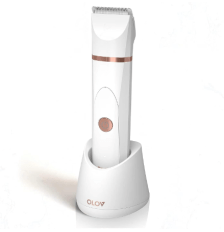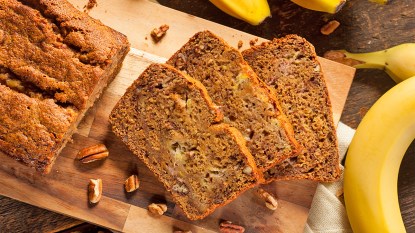The White Bread That’s Actually *Good* For You: Why Top Docs Recommend Sourdough
Sourdough starter's fermentation process adds a tangy flavor — and nutritional perks that can't be beat!
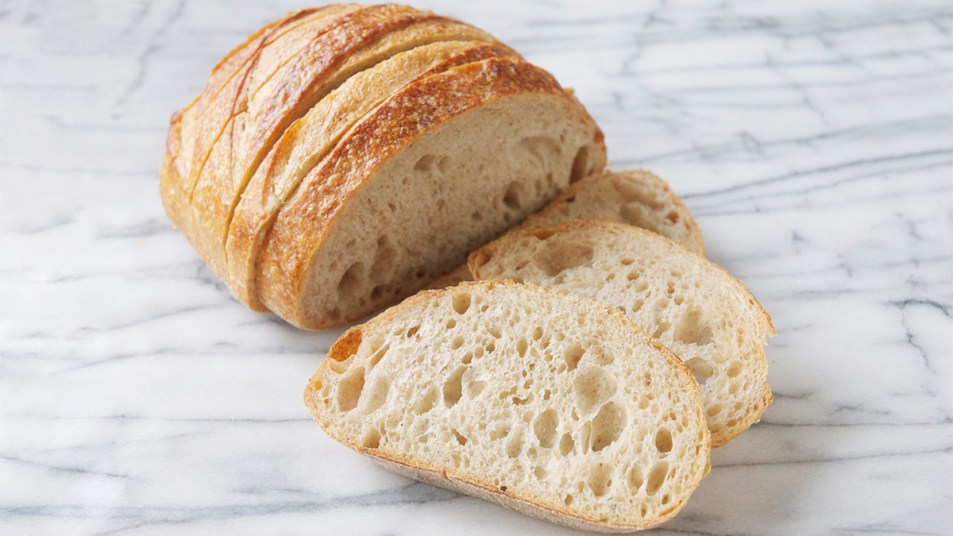
When you think of “healthy bread,” you probably image a dark, hard slab of multi-grain something-or-other that sits in your stomach like lead. That’s why the fact that a growing body of research suggesting that light, fluffy, tangy sourdough bread is just as healthy — if not more so — comes as such a surprise. And a very happy surprise for white bread lovers! Sourdough is the exception to the rule because the dough’s unique fermentation process can help unlock health benefits for your gut, lower blood sugar and prevent chronic diseases. Keep reading to see why top docs say sourdough bread is a healthy option when you’re hankering for a slice or two.
How sourdough is different from other breads
While sourdough looks like a standard loaf of crusty bread, it’s definitely in a league of its own. The tangy and sour taste distinguish it from plain old white bread. This distinct flavor is a result of its being made with a “starter” known as levain — which is a flour and water mixture that’s fermented by wild yeast.
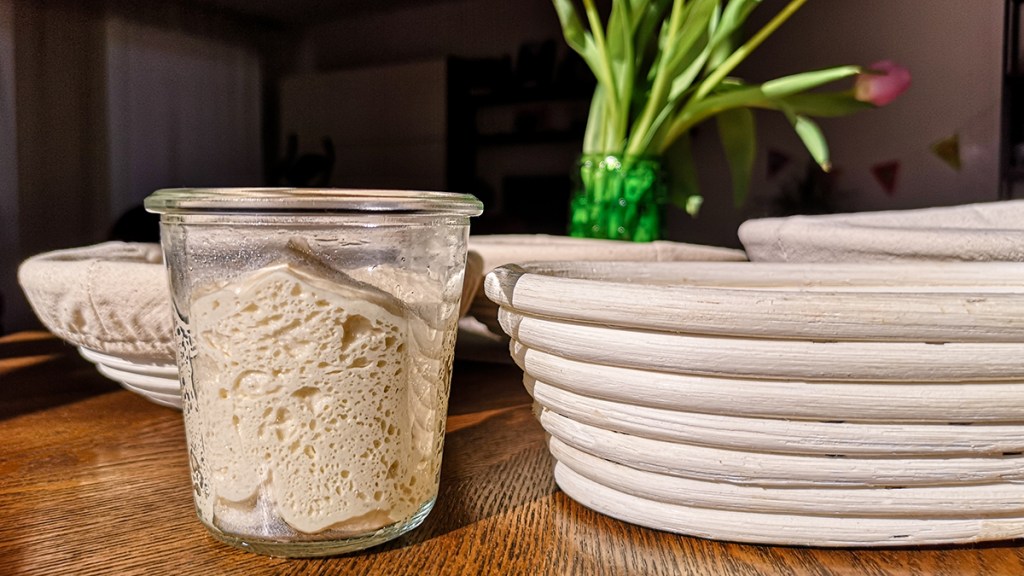
This sourdough starter is quite different than commercial yeast you get in a packet because it’s found in the air (yep, it’s floating all around you right now), so it’s a more natural leavener that creates a surprising and ever changing flavor once baked into a loaf. (Click through for a more detailed look into the process of making sourdough bread at home.)
Is sourdough healthy? Yes — here’s how
The typical slice of sourdough bread has 96 calories and 18 grams of carbohydrates, while white bread has 80 calories and 15 grams of carbs per slice. So on numbers alone, sourdough doesn’t look like the health winner. But numbers aren’t everything, and in fact, sourdough offers some amazing health perks. Below you can find three key benefits that are associated with eating it on a regular basis.
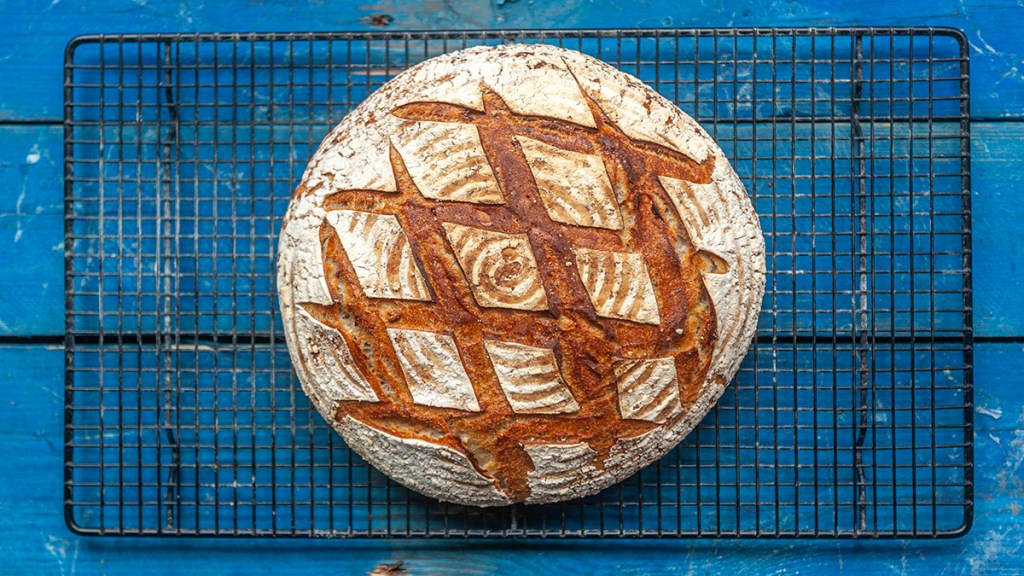
Related: How to Make Ezekiel Bread At Home: Easy Recipe For This Super-Healthy Bread
Sourdough bread helps boost gut health
You might be surprised that a type of bread can boost our gut health. But sourdough’s fermentation process produces lactic acid bacteria, which contain prebiotics and probiotics that your gut needs to maintain the right balance of healthy bacteria. Otherwise, Vincent Pedre, MD, warns that poor gut health “can affect your whole body, much like a faulty thyroid, making you feel tired, achy and depressed.” (Click through to learn more on why prebiotics and probiotics are essential for your gut and overall health.)
Fortunately, Dr. Pedre assures that “gut imbalances are reversible” — and that fermented foods like sourdough help put your gut back on the right track. Research backs this up also as a 2019 study compared the gut bacteria content of a group of mice fed a daily diet containing sourdough bread for four weeks to mice that went without it.
Following the study period, researchers found the prebiotic and probiotic qualities of sourdough increased the function of necessary gut bacteria like bacteroides and clostridium. Studies have shown that these types of gut bacteria help with functions such as regulating your stool and providing vitamins and nutrients to your intestine. Similar to pieces of a puzzle, these kinds of bacteria are all needed to maintain a healthy gut — which consuming sourdough bread can help with.
Sourdough bread lowers risk of chronic disease
By now, we’re all aware of how popular the Mediterranean diet has become for improving health and increasing longevity. Research published in Aging Clinical and Experimental Research underlines this with findings that older adults from southern regions in the Mediterranean often eat whole wheat sourdough as part of their regular diet. (Click through to read more about the Mediterranean diet.)
Researchers explained that whole grain sourdough bread is rich in fiber, which lowers “bad” cholesterol levels and, in turn, protects against chronic diseases like coronary heart disease, diabetes and cancer. It also works to reduce inflammatory markers and boosts insulin sensitivity with its slow digestion rate. This even is true for sourdough bread that isn’t made whole grain flour as it still contains the fermented levain, which also causes a more gradual absorption process.
It’s recommended that women over 50 aim to incorporate at least 21 grams of fiber into their everyday diet, and sourdough typically contains 1 gram per slice. However, Michelle M. Thompson, MD, advises against eating a large amount of fiber-rich foods in a short period of time. “A sudden, large uptick in fiber can initially slow digestion and bulk up stool, causing constipation,” she explains. “But the fix is easy: Simply dial back to 25 grams daily.”
Dr. Thompson adds that once your body is used to that 25-gram amount and you’re regular again, you can eat more fiber. Just be sure to increase the amount gradually so your body has time to adjust.
Sourdough helps with blood sugar control
According to Sara Gottfried, MD, blood sugar spikes can trigger several health troubles including weight gain. “When blood sugar is elevated, your metabolism gets slower and slower, while you may get fatter and fatter,” Dr. Gottfried says. “[However,] when we flatten our glucose spikes, cravings dissipate, hormones rebalance and our body stays in fat-burning mode longer, resulting in fat loss.”
Related: Cottage Cheese Bread Has Just 2 Ingredients, Boasts 50% More Protein
Sourdough bread is a food that’s unlikely to raise blood sugar because it takes longer for your body to digest than processed white or wheat bread. This is due to carbohydrates within sourdough being altered during the fermentation process, decreasing its glycemic index. A small study published in the British Journal of Nutrition examined the effects that four different types of bread (white, whole wheat, sourdough and whole wheat barley) had on metabolism, blood sugar and insulin levels.
Ten overweight adults participated in this one-month study, where each week they consumed 50 grams of carbs from one of the breads and ate a second meal three hours later. After reviewing blood samples taken between each ingestion of bread and the meal, researchers found that eating sourdough was linked with lower blood sugar and insulin levels in participants compared to the other breads.
Overall, sourdough is nutritious and delicious bread option to enjoy as part of a balanced diet.
How to store sourdough bread
You can easily find sourdough in the bakery aisle alongside other breads, like baguettes and rolls. Since sourdough has an approximate shelf life of four days, store it in an airtight container to prevent it from going stale too quickly. Our stories on tips for storing sourdough in a bread drawer and even a cereal container will ensure the loaf keeps its pillowy soft texture for days to come!
Keep reading for more on health-boosting breads:
Eating These Types of Breads Might Be the Key to Living Longer
Want to Satisfy Your Carb Cravings the Guilt-Free Way? Try This Nutritious Bread
Cottage Cheese Bread Has 50% More Protein — And It’s Super Easy to Make at Home
This content is not a substitute for professional medical advice or diagnosis. Always consult your physician before pursuing any treatment plan.

